Insiders
Exposing the Hidden Culture of Maldives


A Diva Maldives employee wearing the Maldivian traditional sarong. Diva Maldives freshly serves fish caught by local fishermen from neighboring islands.
By generating employment and securing a revenue stream of foreign currency, tourism has remained the largest economic industry in Maldives. With its numerous resorts of unmatchable bliss and natural beauty of its beaches and climate, Maldives has succeeded in attracting tourists from all over the world.
The flourishing industry which began during the 1970s, offers tourists its crystal clear waters, white sandy beaches and extraordinary underwater scenery. Diving, surfing, and snorkeling are some of the many water sports offered by Maldivian resorts.
Despite the large amount of resorts and their uncontested success, most of the Maldivian resorts have remained expensive and aimed at the extremely rich and wealthy. While some may argue that the bottom end resorts should be affordable to even the middle class tourists, others refuse to accept that it may indeed increase the popularity of the small island resorts.
The true colors of the rich and unique Maldivian history and culture have also been filtered out of the industry. In fact it can be said that the Maldivian tourism industry has failed to present to the tourists, our heritage. While the industry has grown, even without the cultural tourism, the small nation has its very own cluster of remnants and relics.
The historic sites, covered beneath dunes of sand, slowly giving away to the destruction of time should be preserved and presented to tourists. In the same manner that one wishes to see the magnificence of the Roman cathedrals, Maldives can provide artifacts that can mesmerize even those who have witnessed the pyramids and sphinxes of Egypt. There is no reason why we shouldn’t promote our history using our unique wet lands, old trees that have lived for decades, and palaces such as the one in Utheemu.
Cultural tourism will open up new opportunities to expand the industry to the islands and it will also assist in preserving the historic sites. With the increase of popularity and demand for such sites the industry itself will invest in the protection and preservation of such locations.
Innovative ideas and realistic designs are necessary to sustain the industry. An underwater restaurant has been successfully implemented in the Maldives. Why can’t the idea be expanded? Perhaps the future holds better possibilities of constructing underwater resorts. To sustain our natural gift we need to test out new ideas and refine existing ones.
Tourists should be granted the opportunity to experience the local life. They should be given a chance to see the country for what it really is. They should be allowed to see who we really are. While we proudly claim our own language, belief system and culture, we must show it to the outside world. We must let the world see this beautiful nation as we see it through our own eyes.
When the light shimmers through the clouds, shining over the sunny side of life, the veil must be lifted. Secrets of our unity must be spilled. Relics must be dug out. After all it is paradise, and paradise has nothing to hide.
Action
Freediving with tiger sharks: Shark Expedition Fuvahmulah collaborates with marine biologist Andriana Fragola

Shark Expedition Fuvahmulah, renowned for its world-class scuba diving encounters, has announced an exciting expansion: the chance to freedive with tiger sharks in the Maldives’ southernmost atoll.
Fuvahmulah, often hailed as the “Tiger Shark Capital of the World,” is the only place on the planet where year-round encounters with tiger sharks are virtually guaranteed. With more than 280 identified resident tiger sharks, the island has become a bucket-list destination for divers and marine enthusiasts alike.

The newly introduced freediving experience offers a unique way to interact with these apex predators. Unlike scuba diving, freediving takes place without bubbles or heavy gear, allowing participants to connect with tiger sharks in a quieter, more natural way. This approach often makes the encounter more comfortable for the sharks and more intimate for the diver.
Guiding these expeditions is Andriana “Andy” Fragola, a marine biologist, shark diver, and conservationist currently based in Hawaii. Andy holds a Master’s Degree in Marine Conservation Biology with a focus on shark microbiology and has dedicated her career to shark research, conservation, and public education. Through her work in media and content creation, she strives to raise awareness about the importance of shark conservation and inspire people to take action to protect marine ecosystems.
“Freediving with tiger sharks is a raw and transformative experience,” says Andy. “Being eye-to-eye with these incredible animals without the barrier of scuba gear allows you to see them for what they truly are—powerful, intelligent, and essential to the health of our oceans.”
Shark Expedition Fuvahmulah ensures that all freediving activities are conducted under strict safety protocols. With experienced professionals like Andy leading the dives, participants can expect both an exhilarating and responsible adventure.

Why this experience stands out:
- Eye-to-eye encounters with tiger sharks in their natural habitat.
- A deeper, more personal connection with marine life.
- Expert-led guidance ensuring safety and conservation awareness.
In addition to freediving, Shark Expedition Fuvahmulah offers a range of packages, including accommodation options, making it easier for adventurers to fully immerse themselves in the island’s extraordinary marine environment.
For bookings and more information:
📧 Email: sales@scuba-expeditions.com
📱 WhatsApp: +960 9894653
🌐 www.scuba-expeditions.com
News
MIC appoints Ali Shakir as Group General Manager

Maldives Inflight Catering Pvt Ltd (MIC) has announced the appointment of Ali Shakir as the Group General Manager. With over 27 years of experience in the hospitality industry, Ali Shakir will now oversee operations for the Maldives Inflight Kitchen, Hulhule Island Hotel, and Madifushi Private Island Maldives.
Ali Shakir, who most recently served as General Manager at OBLU NATURE Helengeli by SENTIDO, played a pivotal role in the resort’s redevelopment and reopening. Prior to that, he joined Atmosphere Core in 2019 as Resort Manager at VARU By Atmosphere, where he was instrumental in the pre-opening of several properties, including OBLU XPERIENCE Ailafushi, OBLU SELECT Lobigili, OZEN RESERVE BOLIFUSHI, and VARU By Atmosphere. His wealth of experience also includes key positions at prestigious resorts such as Angsana Velavaru, Hulhule Island Hotel, and Paradise Island Resort and Spa.
Ali is no stranger to MIC, having spent more than 15 years at Hulhule Island Hotel, where he rose through the ranks to become Executive Assistant Manager before departing in 2019.
Commenting on his new role, Ali Shakir expressed his enthusiasm:
“I am honored to rejoin MIC and lead the operations of these iconic properties. This company has always held a special place in my career, and I am excited to work with the talented team to drive further success and innovation.”
Ibrahim Shareef Mohamed, Managing Director of MIC, welcomed Ali to the leadership team, praising his extensive experience and strategic vision:
“We are delighted to have Ali back at MIC. His proven track record in the hospitality sector, combined with his in-depth knowledge of Hulhule Island Hotel and his previous achievements, makes him the ideal leader to take us forward. I have no doubt that under his leadership, MIC will continue to set benchmarks for excellence.”
Ali Shakir holds a General Managers Program certificate from Cornell University, USA, and a General Hotel Service certification from the Institute of Hotel and Catering Service, Maldives.
MIC is a joint venture between Maldives Airports Company Limited and SATS Ltd, renowned for its inflight catering services to airlines and private jets. Beyond the Maldives Inflight Kitchen, MIC also manages Hulhule Island Hotel, the only airport hotel at Velana International Airport, and the luxurious Madifushi Private Island Maldives in Meemu Atoll.
Tips & Advice
Flying after scuba diving: Essential guidelines for safe travel

Scuba diving in the Maldives offers an unparalleled experience, with its vibrant coral reefs, diverse marine life, and crystal-clear waters. However, one crucial aspect that divers must consider is the timing of their flights after diving. Understanding the recommended waiting periods before flying is essential to ensure safety and prevent decompression sickness. Here’s what you need to know.
Understanding Decompression Sickness
Decompression sickness, also known as “the bends,” occurs when nitrogen bubbles form in the bloodstream and tissues due to rapid changes in pressure. This can happen if a diver ascends too quickly or flies too soon after diving. The reduced cabin pressure in an airplane can exacerbate the formation of these bubbles, leading to serious health risks.

Recommended Waiting Times
The waiting time before flying after scuba diving depends on the type and number of dives completed. Here are the general guidelines:
- Single Dive: If you have completed a single, no-decompression dive, it is recommended to wait at least 12 hours before flying. This allows sufficient time for the body to eliminate excess nitrogen.
- Multiple Dives or Multiple Days of Diving: For divers who have completed multiple dives or have been diving over several days, the recommended waiting period extends to 18 to 24 hours. This longer duration helps ensure that nitrogen levels in the body have decreased to safe levels.
- Dives Requiring Decompression Stops: If your dive profile included decompression stops, it is crucial to wait at least 24 to 48 hours before boarding a flight. Decompression dives involve higher nitrogen absorption, necessitating a longer off-gassing period.
Seaplane and Domestic Flights
Many tourists visiting resorts and other islands in the Maldives travel by seaplane or domestic flights. While these flights generally operate at lower altitudes compared to international flights, the same waiting time guidelines apply. The reason is that even at lower altitudes, the risk of decompression sickness remains significant due to the changes in pressure.
Practical Tips for Divers
- Plan Your Dives and Flights: When planning your diving trip, consider your flight schedule. Ensure that you have ample time between your last dive and your flight to adhere to the recommended waiting periods.
- Stay Hydrated: Proper hydration can aid in the elimination of nitrogen from the body. Drink plenty of water before and after your dives.
- Monitor Your Health: Pay attention to any symptoms of decompression sickness, such as joint pain, dizziness, or difficulty breathing. If you experience any of these symptoms, seek medical attention immediately.
- Use Dive Computers: Modern dive computers can help track your nitrogen levels and provide personalized recommendations for safe flying times based on your dive profile.
Flying after scuba diving requires careful consideration and adherence to safety guidelines to prevent decompression sickness. By following the recommended waiting times and taking necessary precautions, divers can enjoy their underwater adventures in the Maldives and travel safely. Always consult with dive professionals or medical experts if you have any concerns about your health and safety.
-
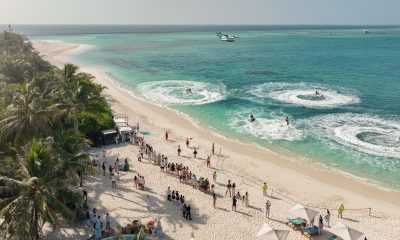
 News1 week ago
News1 week agoInterContinental Maldives Maamunagau rings in 2026 with ocean-inspired festive programme
-

 Drink1 week ago
Drink1 week agoHuvafen Maldives hosts exclusive Riedel Wine experience led by Maximilian J. Riedel
-
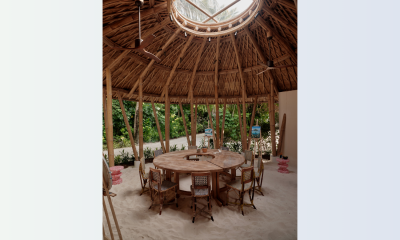
 News1 week ago
News1 week agoFinolhu unveils ‘A Year in Colour’ with global artist residencies in 2026
-
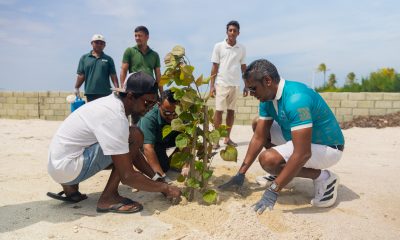
 News1 week ago
News1 week agoSun Siyam Olhuveli marks end of 2025 with sustainability-led programmes
-

 News6 days ago
News6 days agoZara Larsson brings pop and tradition together at JOALI Maldives New Year event
-
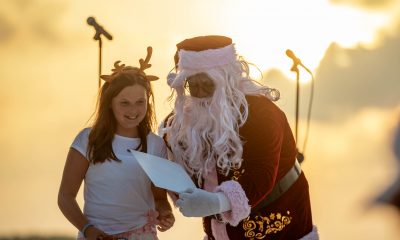
 News1 week ago
News1 week agoSun Siyam Vilu Reef brings ‘Ocean Odyssey’ to life this festive season
-
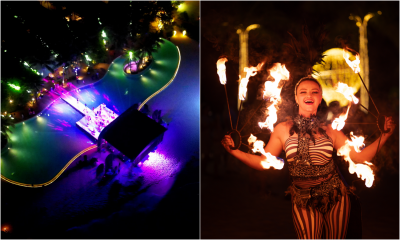
 News7 days ago
News7 days agoAmilla Maldives hosts ‘Around the World in Wonder’ New Year experience
-

 Featured5 days ago
Featured5 days agoDhigali Maldives closes festive season with dynamic New Year’s Eve party









